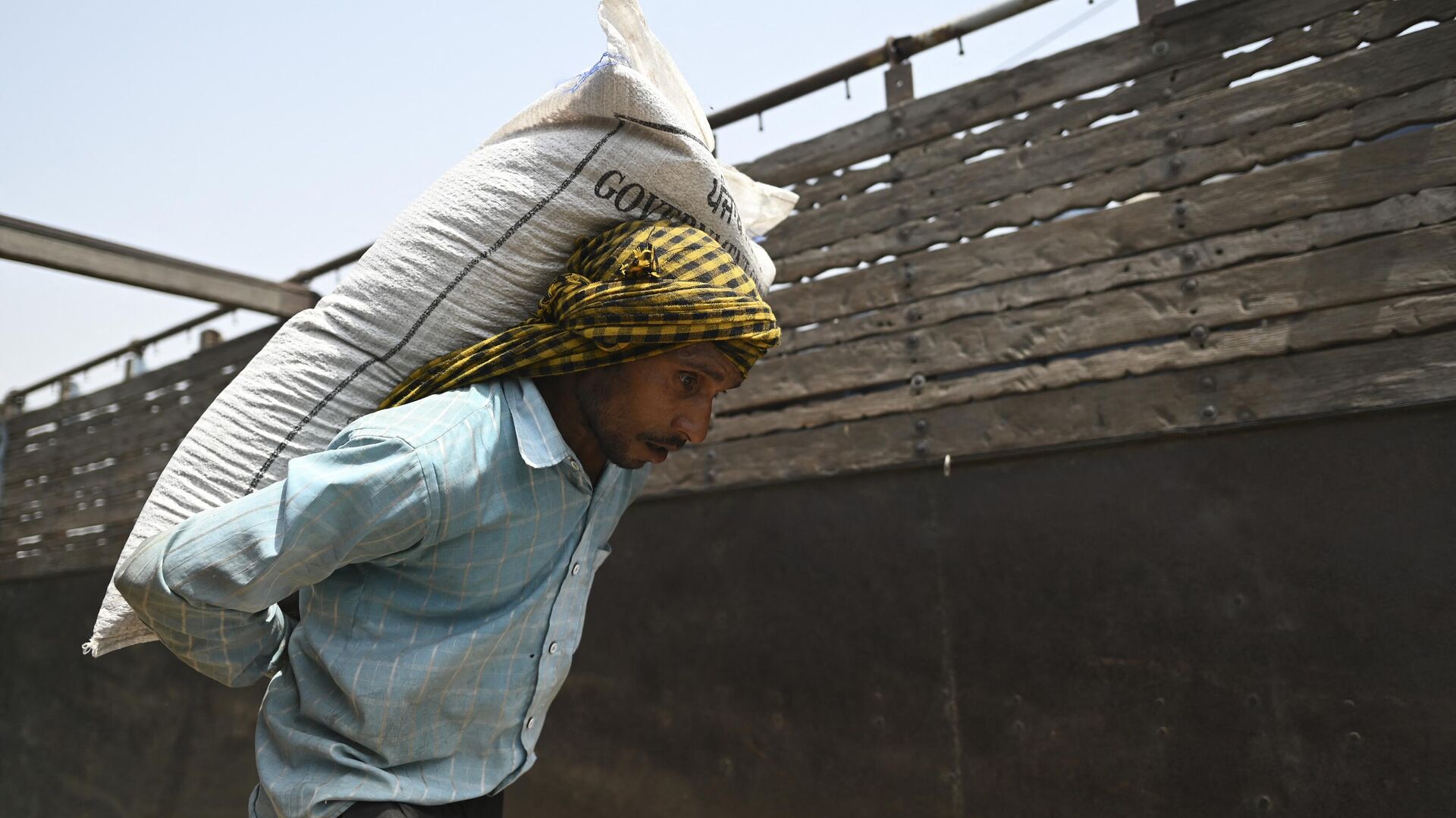https://sputniknews.in/20230222/indian-govt-forms-panel-to-protect-wheat-crop-amid-heat-wave-threat-970016.html
Indian Gov't Forms Panel to Protect Wheat Crop Amid Heat Wave Threat
Indian Gov't Forms Panel to Protect Wheat Crop Amid Heat Wave Threat
Sputnik India
As meteorologist warns for summery days ahead in the Northern and Northwest part of India, the Indian government formed a panel to look upon the risk posed to wheat crop from heatwaves, reported Indian media.
2023-02-22T16:31+0530
2023-02-22T16:31+0530
2023-04-20T14:01+0530
india
wheat export
wheat export ban
heatwave
fertilizers
agriculture
indian farmers
heatwave in india
https://cdn1.img.sputniknews.in/img/07e7/02/16/971200_0:159:3079:1890_1920x0_80_0_0_b86a55b1ea3a5559674caba126c761cc.jpg
As meteorologists warn of a hot summer in the northern and northwest parts of India this year, the government has formed a panel to look upon the risk posed to the wheat crop from heatwaves.A government panel headed by Agriculture Commissioner P.K. Singh has taken up the issue and is already coordinating with states to ensure that sufficient water through reservoirs, dams, and canals reaches farms, Indian media report.Officials are reportedly also looking for supply lines for cheap diesel and aiming to ensure a steady power supply, which is needed for farmers to run water pumps.How India's Gov't Will Protect the CropsWheat is a staple crop of India, sown between early November and late December, with harvest extending from late March through April. India generally grows one wheat crop during the year.Agriculture Commissioner Singh told media that the authorities issued a respective advisory this month in hopes that it would reach farmers in every village across India.“Our group will keep a sharp eye on the situation,” Singh said.However, he did not disclose the specific pointers of the advisory.Heatwave Threat in IndiaLast year, an unexpected heatwave in parts of northern India affected the production of wheat crops. Although the Indian government has restricted exports and managed the crop price, it cannot afford to deal with declining production for a second straight year.Earlier this month, the Agriculture Ministry said wheat production was likely to rise by 4.1 percent, to a record 112.2 million tons in 2023.But concern is growing after lack of winter rains and rising temperatures.Meanwhile, meteorologists have predicted dry and hot weather conditions in March, which would adversely affect crops in general.In February, the northwestern and northern parts of India saw a temperature 7-9 degrees above normal.
india
Sputnik India
feedback.hindi@sputniknews.com
+74956456601
MIA „Rossiya Segodnya“
2023
Deexa Khanduri
https://cdn1.img.sputniknews.in/img/07e6/0c/13/138923_52:0:533:481_100x100_80_0_0_cadf23d341691fc65ff2b22fd1afe584.jpg
Deexa Khanduri
https://cdn1.img.sputniknews.in/img/07e6/0c/13/138923_52:0:533:481_100x100_80_0_0_cadf23d341691fc65ff2b22fd1afe584.jpg
News
en_IN
Sputnik India
feedback.hindi@sputniknews.com
+74956456601
MIA „Rossiya Segodnya“
Sputnik India
feedback.hindi@sputniknews.com
+74956456601
MIA „Rossiya Segodnya“
Deexa Khanduri
https://cdn1.img.sputniknews.in/img/07e6/0c/13/138923_52:0:533:481_100x100_80_0_0_cadf23d341691fc65ff2b22fd1afe584.jpg
wheat crop in india, season of wheat crop in india, importance of wheat crop in india, about wheat crop in india, india wheat crop, indian government ban on wheat, wheat export ban, heatwave
wheat crop in india, season of wheat crop in india, importance of wheat crop in india, about wheat crop in india, india wheat crop, indian government ban on wheat, wheat export ban, heatwave
Indian Gov't Forms Panel to Protect Wheat Crop Amid Heat Wave Threat
16:31 22.02.2023 (Updated: 14:01 20.04.2023) Deexa Khanduri
Sputnik correspondent
The temperature in March last year broke a 122-year summer record in northern India. Thus, the wheat yield in 2022 saw a drop of up to 4.5%, forcing the Indian government to ban wheat exports.
As meteorologists warn of a hot summer in the northern and northwest parts of India this year, the government has formed a panel to look upon the risk posed to the wheat crop from heatwaves.
A government panel headed by Agriculture Commissioner P.K. Singh has taken up the issue and is already coordinating with states to ensure that sufficient water through reservoirs, dams, and canals reaches farms, Indian media report.
Officials are reportedly also looking for supply lines for cheap diesel and aiming to ensure a steady power supply, which is needed for farmers to run water pumps.
How India's Gov't Will Protect the Crops
Wheat is a staple crop of India, sown between early November and late December, with harvest extending from late March through April.
India generally grows one wheat crop during the year.
Agriculture Commissioner Singh told media that the authorities issued a respective advisory this month in hopes that it would reach farmers in every village across India.
In accordance with the new guidance, farmers are reportedly advised to spray potassium chloride, a type of fertilizer, on crops if temperatures rise above 30°C (86°F) in the day or 15°C at night.
“Our group will keep a sharp eye on the situation,” Singh said.
However, he did not disclose the specific pointers of the advisory.
Last year, an unexpected heatwave in parts of northern India affected the production of wheat crops. Although the Indian government has restricted exports and managed the crop price, it cannot afford to deal with declining production for a second straight year.
Earlier this month, the Agriculture Ministry said wheat production was likely to rise by 4.1 percent, to a record 112.2 million tons in 2023.
But concern is growing after lack of winter rains and rising temperatures.
Meanwhile, meteorologists have predicted dry and hot weather conditions in March, which would adversely affect crops in general.
In February, the northwestern and northern parts of India saw a temperature 7-9 degrees above normal.


